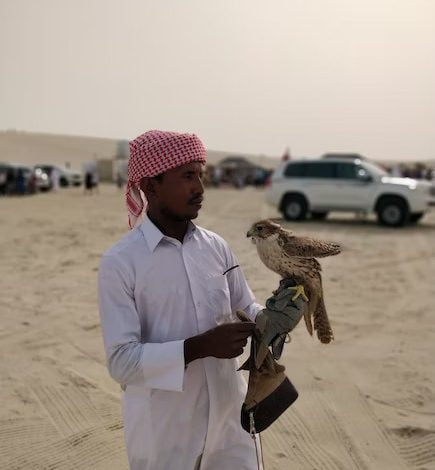Interesting facts about International Falconry and Hunting Festival 2023

The sport of falconry first decades ago and spread to both the East and the West. The Bedouin tribes, who employed the birds as a hunting weapon, brought the pastime to Qatar. They found that allowing raptors to kill birds that were migrating across the Arabian Peninsula was far simpler than trying to shoot them down themselves. The falconry technique used by the Bedouins served as the model for the contemporary sport being played in Qatar. Although falconry has all but vanished from the European continent over the years, it still exists in the Middle East.
Qatar International Falcons and Hunting Festival
The event, which is run by the Al Gannas Association, strives to preserve and advance the historical sport of falconry, which has been recognised by UNESCO as a Representative Intangible Cultural Heritage of Humanity since November 2010. Al Gannas is an organisation dedicated to hunting and was founded in 2008. This group wants to encourage traditional Arabic hunting. Al Gannas is a nonprofit organisation that supports, prepares, and represents Arab hunters in national and international contests. The association supports field research and studies and offers the greatest hunting facilities and gear. This Festival is regarded as one of the biggest celebrations of falconry and hunting in the area.
Training falcons for competitions
Falcon training is not a simple undertaking. Its crucial to first comprehend the bird’s primal impulses. Since falcons consume fresh meat, feeding them a balanced diet is an essential element of training as well. Additionally, the Souq Waqif Falcon Hospital and other facilities receive repeated visits from the falcons for checkups. To assure the falcon’s optimal health, x-rays, blood tests, etc. are obtained. Falconers can identify any unresolved injuries or issues with the falcon’s bones, feathers, etc. through numerous exams. Each trainer interacts with the animal in a unique way. The falcon is often hooded, tied, and then mounted on the owner’s arms. Owners typically give their falcons meals to calm them down when they become agitated when the hood is removed. Remember to attempt to avoid making direct eye contact with the new falcon directly. This could deter them. The falcon gradually forms a link with the owner by periodically being perched on the hand. The falconer can occasionally need to hold the animal for extended periods of time. The falcon has to gradually become accustomed to hooding and un-hooding, as well as feeding off the hand or from a perch. The falconer starts preparing the falcon for actual hunting through various methods as trust develops. It also helps to identify and call the falcon. In essence, over time, the relationship between the falconer and the falcon is built on trust, patience, and a great deal of effort. Falconry is “Amana,” which is Arabic for maintaining trust.
Preservation of falconry
Qatar was one of the first nations to undertake steps to support the preservation of this global legacy, not only in Qatar but also in many other Arab and international nations, therefore aiding in its preservation.
Falconry in Qatar
The Middle East has a rich and lengthy history with falconry. Falconry has played a significant historical role in Qatar thanks to the Bedouins. The tribe utilised falcons to hunt migrating birds for meals about 5000 years ago. This raptor bird was being trained for much more than just survival during this drill. The falconer and the falcon enjoy a unique affinity for this kind of art.






